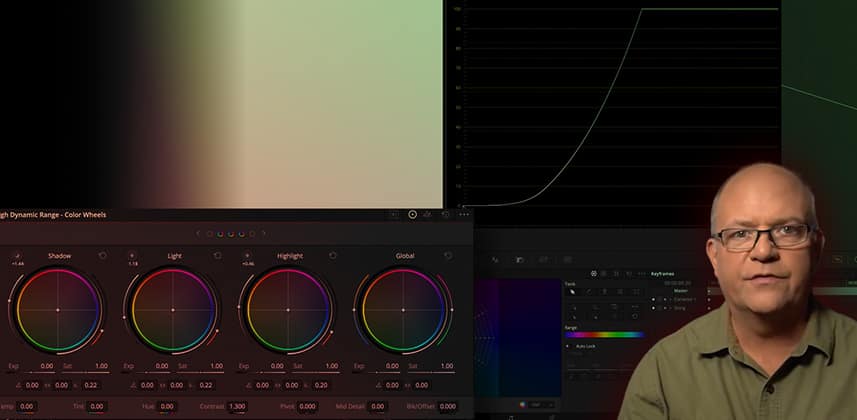Note: This Insight is the first in a new category of shorter Insights, that we’re calling Quick Tips. Their running times will be between 2-6 minutes and focus very narrowly on a particular aspect of a tool or workflow.
Quick Tip: How DaVinci Resolve’s two Contrast-Pivot controls behave very differently
In the Mixing Light Forums, a Mixing Light member recently commented:
Note that the Resolve reference manual says, “the Contrast control in the HDR palette ignores the “Use S-curve for contrast” setting in the General Options panel of the Project Settings.”
– Maurice M.
Maurice is 100% correct. The Contrast-Pivot controls in the Primaries Palette is an entirely different tool than the Contrast-Pivot control in the HDR Palette. AND it behaves differently. It’s confusing. It’s not entirely clear HOW they are different if you pull up a few different images and start spinning the Contrast knob. You’ll discover that something is different between these controls. But what?
As is often the case, the key is to apply these controls to a grayscale image – and then evaluate the results.
Key Takeaways from this Insight
By the end of this Quick Tip, you should understand:
- How and why the ‘S-Curve’ Project Setting ONLY effects the Primaries palette, not the HDR Palette
- How the HDR palette is a hybrid of the two possible modes in the Primaries palette
- The HDR palette behavior mimics optics and the human brain’s interpretation of adding contrast
Related Insights
Questions or Comments?
What do you think of this new shorter format of Mixing Light Insights (they may go as short as 3 minutes)? Have you noticed any other behaviors of the HDR Palette’s toolset that aren’t clear to you? My next Quick Tip will call a few of these behaviors out – although probably not in the way that you might think.
– patrick
Member Content
Sorry... the rest of this content is for members only. You'll need to login or Join Now to continue (we hope you do!).
Need more information about our memberships? Click to learn more.
Membership optionsMember Login


